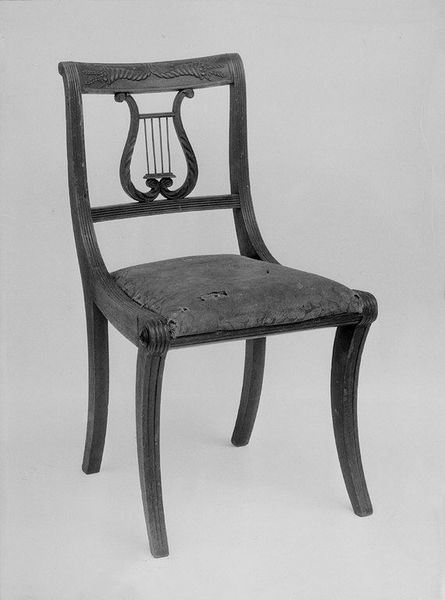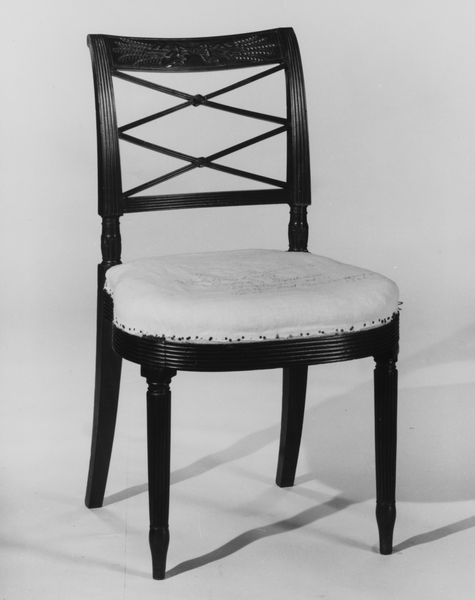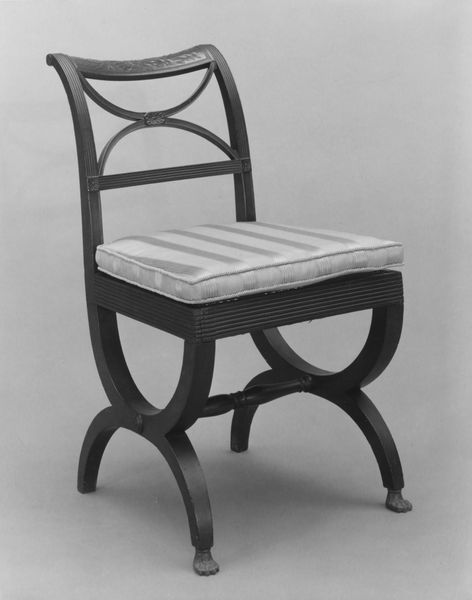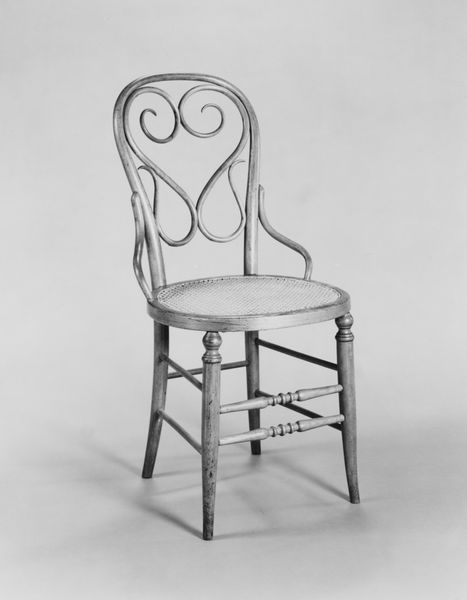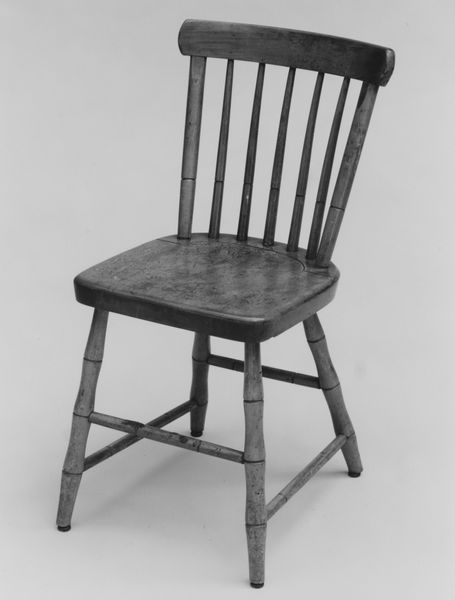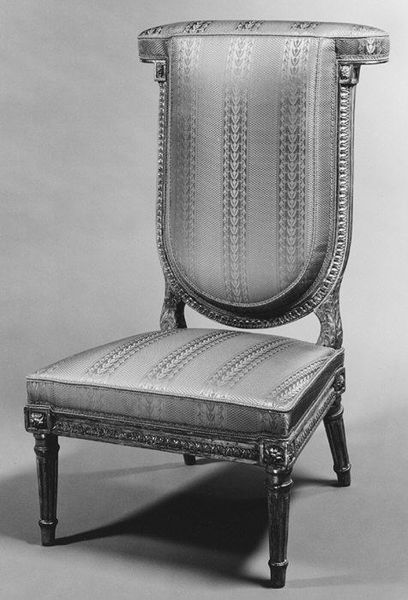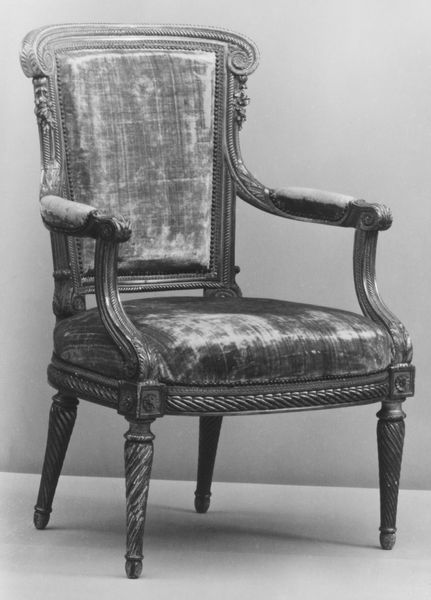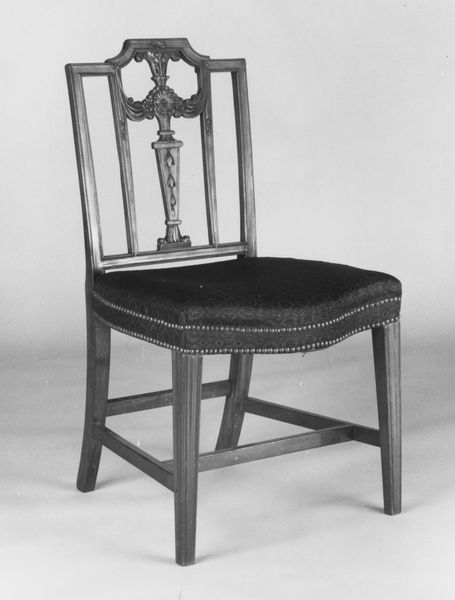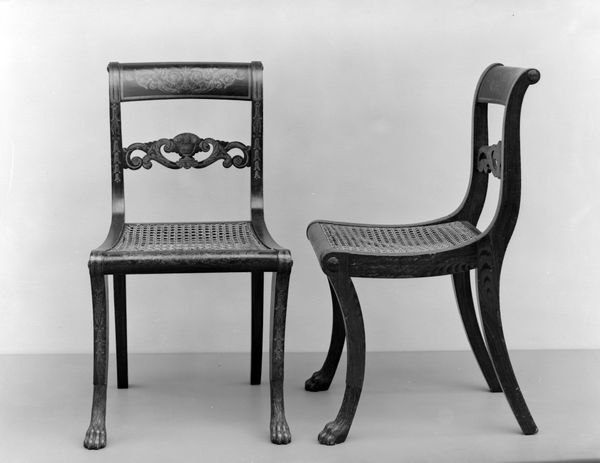
sculpture, wood
#
neoclacissism
#
sculpture
#
furniture
#
form
#
black and white theme
#
geometric
#
sculpture
#
line
#
wood
Dimensions: 36 x 22 1/2 x 18 in. (91.4 x 57.2 x 45.7 cm)
Copyright: Public Domain
Curator: Here we have a side chair crafted sometime between 1792 and 1795 by Slover and Taylor. It's currently part of the Metropolitan Museum of Art's collection. Editor: Well, my first thought is that it feels...severe. The stark lines and restricted palette create a kind of austere elegance. It’s almost like a throne for a minimalist saint. Curator: It does exude a certain formal quality, doesn't it? The design draws heavily from Neoclassical ideals, evident in its symmetry and reliance on simple geometric shapes. There's a deliberate effort to evoke a sense of classical order and restraint. Editor: Absolutely. The straight lines, the fluted legs, and the arching back—it's all very Roman, very much about structure. It's interesting how furniture, seemingly so functional, can carry such weight in terms of cultural and aesthetic messaging. The symbolic importance of these formal gestures is unmistakable. Curator: Indeed. And it is crafted from wood, likely mahogany, though the monochromatic image obscures the grain's natural warmth. What’s remarkable is the craftsman's ability to achieve such precise detail using hand tools. Look at the subtle carving at the crest rail, above those gothic arches! It’s a tiny sunburst. Editor: Yes, there's something profoundly human about seeing the marks of handcrafting, especially in such a disciplined form. It's like the artisans were striving to channel some higher architectural order, like the entablature of a Greek temple in microcosm. I wonder about the person who sat in this chair—what sort of conversation, what kind of pronouncements did they make? Curator: An excellent question! No doubt it held a place of prominence, be it a grand dining hall or a formal parlor. Considering its adherence to classical ideals, this chair represents a specific yearning: a longing for reason, for balance, and a deliberate departure from what they perhaps perceived as the excesses of earlier styles. Editor: I find myself both admiring the discipline and feeling slightly claustrophobic under its reign. Still, one has to acknowledge how brilliantly the makers succeeded in creating this embodiment of the era’s formal taste, so powerfully resonating, still. Curator: I think you are right. Thank you for putting the chair in a new light for me. Editor: Likewise.
Comments
No comments
Be the first to comment and join the conversation on the ultimate creative platform.
